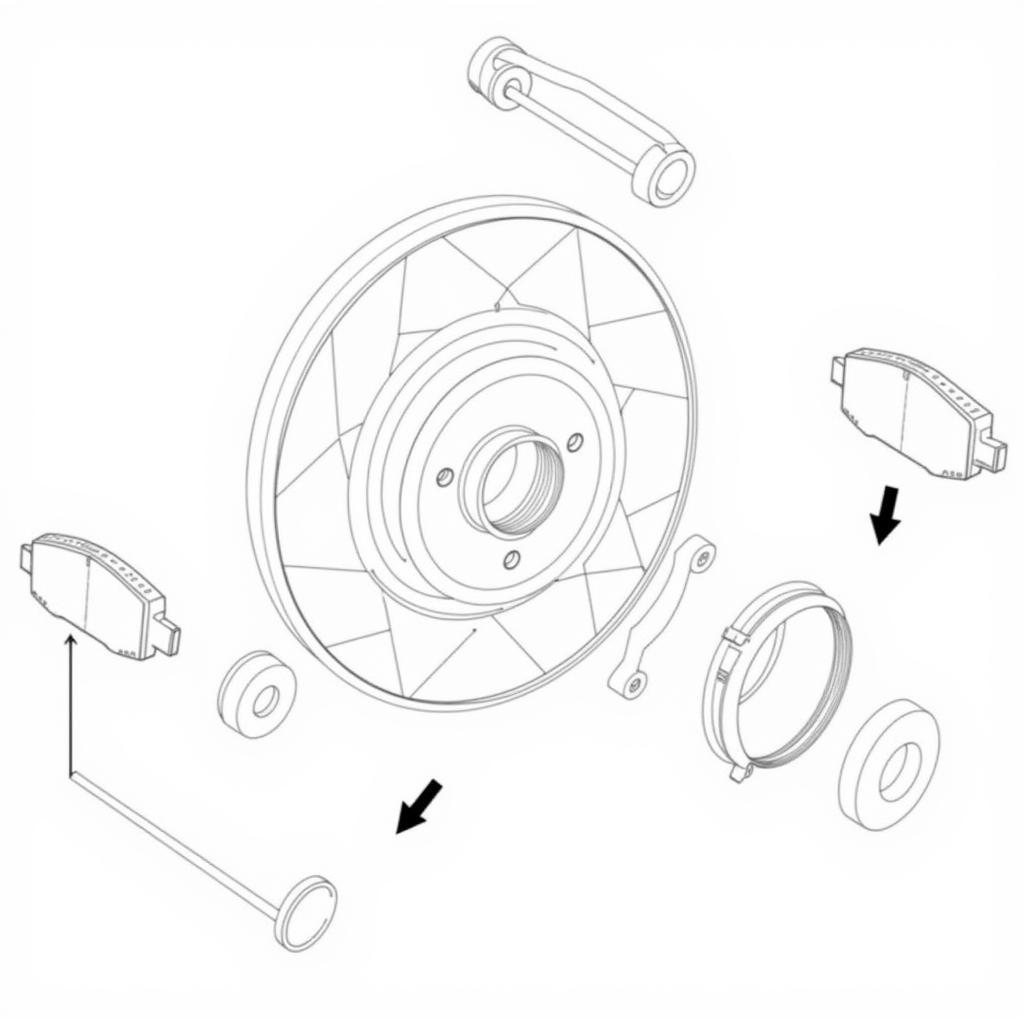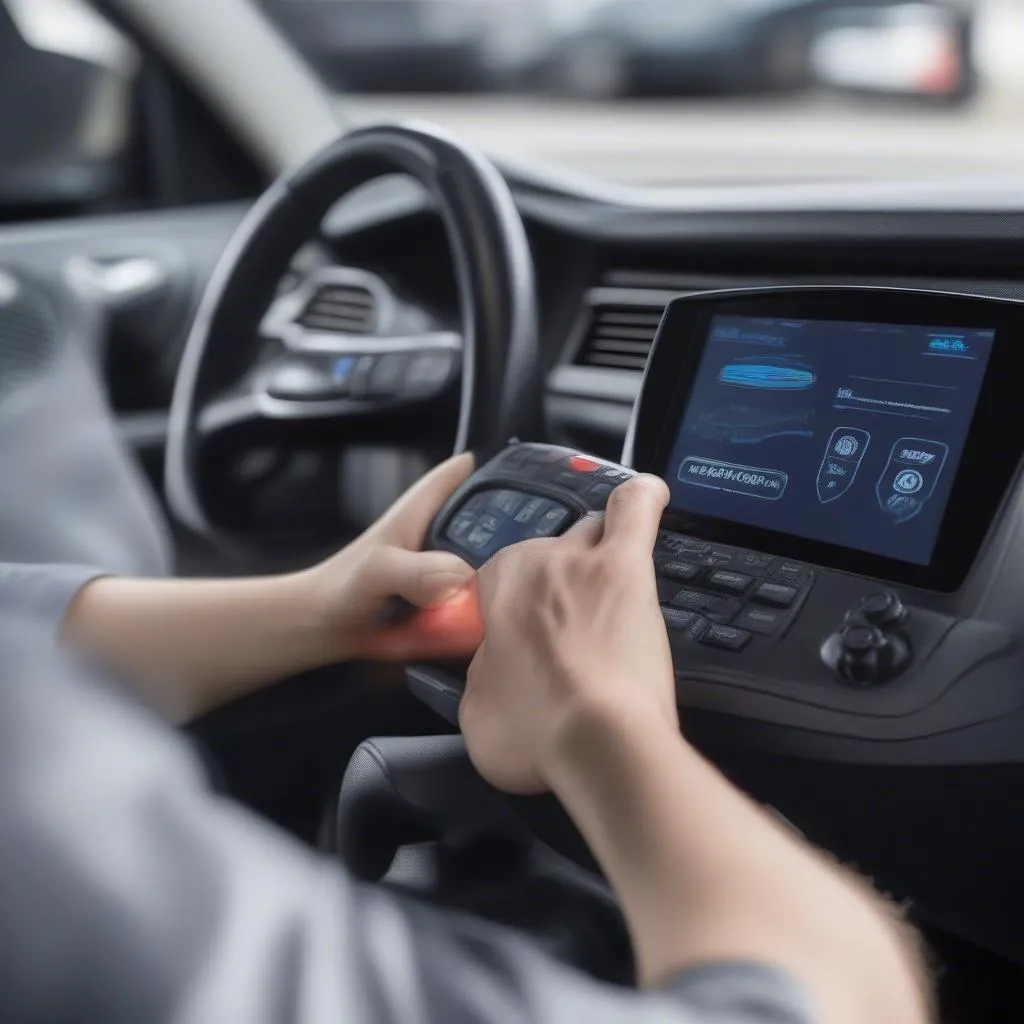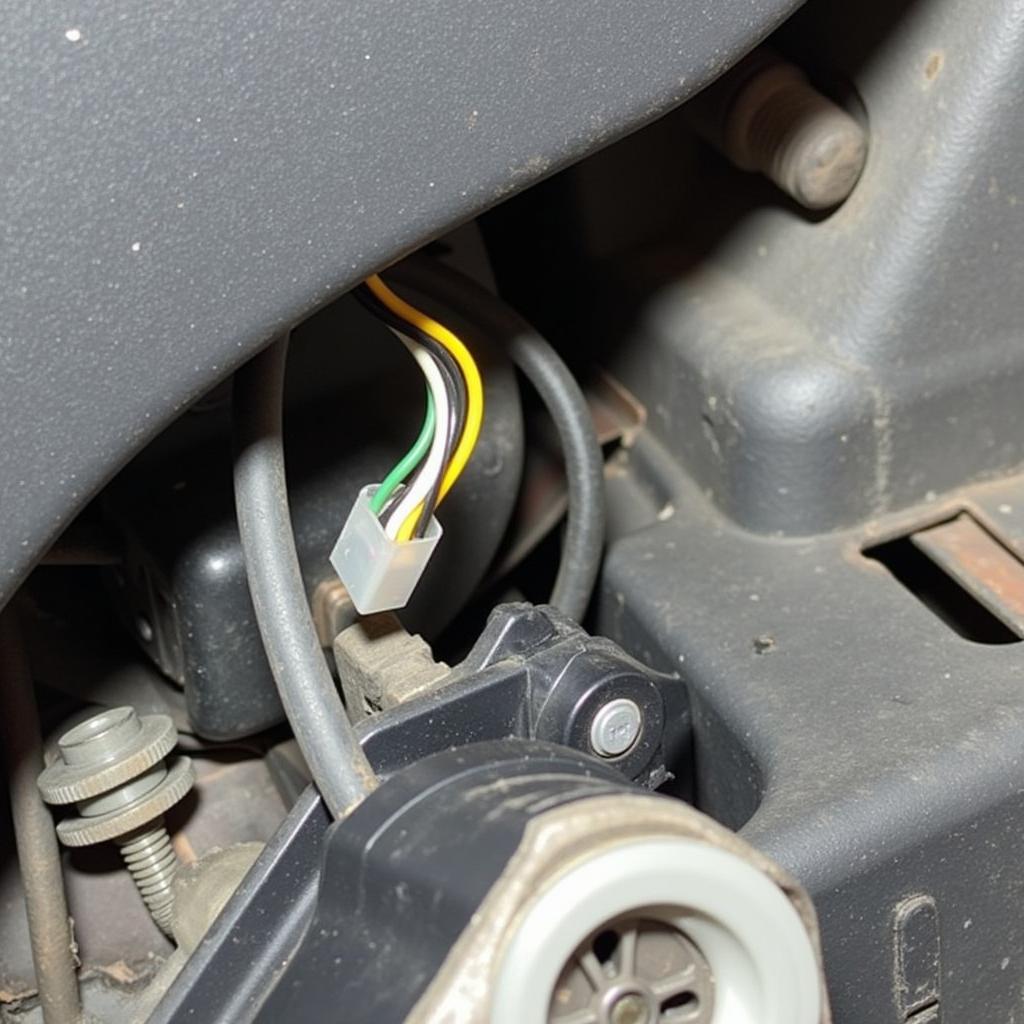The brake pad wear warning indicator is a crucial safety feature in your vehicle, alerting you when your brake pads are nearing the end of their lifespan. Ignoring this warning can lead to costly repairs and compromise your safety on the road. This article will delve into the mechanics of the brake pad wear warning indicator, how to diagnose related issues, and what steps to take when the warning light illuminates.
What is a Brake Pad Wear Warning Indicator?
The brake pad wear warning indicator is a simple yet effective system designed to alert the driver when the brake pads are worn and need replacing. This system usually consists of a small sensor embedded within the brake pad material. As the brake pad wears down, this sensor eventually comes into contact with the brake rotor. This contact completes an electrical circuit, triggering a warning light on the dashboard, often accompanied by an audible squealing sound.
How Does the Brake Pad Wear Warning Indicator Work?
Most modern vehicles employ one of two main types of brake pad wear sensors:
-
Mechanical Sensors: These sensors consist of a small metal tab attached to the brake pad backing plate. As the pad wears down, the tab eventually makes contact with the rotor, creating a high-pitched squealing sound that serves as the warning. This is the most common type and is relatively inexpensive.
-
Electrical Sensors: These sensors use a small wire embedded in the brake pad material. As the pad wears, the wire eventually makes contact with the rotor, completing a circuit and illuminating a warning light on the dashboard. Some systems may also include an audible chime. Electrical sensors offer a more direct and visually apparent warning.
Understanding which type of sensor your car uses is important for proper diagnosis and repair.
After a paragraph with a relevant link, continue writing valuable and unique content while maintaining a natural flow and addressing the user’s intent. For example, you could discuss common causes of premature brake pad wear or troubleshooting steps for a faulty warning indicator.
nissan altima 2007 brake warning light
Diagnosing Brake Pad Wear Warning Indicator Issues
Sometimes, the warning light might illuminate even when the brake pads are not worn. This could be due to a few reasons:
- Faulty Sensor: The sensor itself might be damaged or malfunctioning.
- Wiring Problems: A broken or corroded wire in the sensor circuit can trigger a false warning.
- Moisture or Debris: Water or debris lodged between the sensor and the rotor can temporarily complete the circuit.
If you suspect an issue with the indicator system, a proper diagnosis is crucial.
Troubleshooting a Brake Pad Wear Warning Light
If your brake pad wear warning light comes on, the first step is to inspect the brake pads. If the pads are visibly worn, then replacement is necessary. However, if the pads appear to have sufficient material remaining, further investigation is required.
- Check the Sensors: Visually inspect the brake pad wear sensors for damage or wear.
- Inspect the Wiring: Check the wiring connected to the sensors for any signs of damage, corrosion, or loose connections.
- Clean the Rotors: Remove any debris or buildup from the rotor surface around the area where the sensor makes contact.
What to Do When the Brake Pad Wear Warning Indicator Activates
When the brake pad wear warning indicator activates, it’s crucial to address the issue promptly. Ignoring the warning can lead to further damage to the braking system and potentially compromise your safety.
- Inspect your brake pads: Determine if they are indeed worn.
- Consult a professional: If you are unsure, have a qualified mechanic inspect your brakes.
- Replace your brake pads: If the pads are worn, replace them as soon as possible.
- Check the rotors: The rotors might also need resurfacing or replacement if they are excessively worn or damaged.
Why is the Brake Pad Wear Warning Indicator Important?
The brake pad wear warning indicator is a vital safety feature. It provides a timely alert, allowing you to address brake pad wear before it becomes a critical issue. This helps to maintain optimal braking performance and prevent more expensive repairs down the line.
How to Reset the Brake Pad Warning Light
After replacing the brake pads and addressing any underlying issues, the warning light should reset automatically. However, in some cases, a manual reset might be required. This procedure varies depending on the vehicle’s make and model. Consult your vehicle’s owner’s manual or a qualified mechanic for specific instructions.
“Regular brake inspections are essential for maintaining vehicle safety and preventing costly repairs,” says John Smith, Senior Automotive Technician at ABC Auto Repair. “Don’t ignore the brake pad wear warning indicator – it’s there for your protection.”
Conclusion
The brake pad wear warning indicator is a critical safety system in your vehicle. Understanding its function and how to respond when it activates is crucial for maintaining optimal braking performance and ensuring your safety on the road. Don’t ignore this vital warning – address it promptly to prevent more serious problems.
 Brake System Diagram
Brake System Diagram
FAQ
- What does the brake pad wear warning light look like? It typically looks like a circle with parentheses around it, or the word “BRAKE”.
- Can I drive with the brake pad wear light on? It’s not recommended. Driving with worn brake pads can be dangerous.
- How much does it cost to replace brake pads? The cost varies depending on the vehicle and the type of brake pads.
- How often should I check my brake pads? It’s a good idea to have your brakes inspected every 12,000 miles or as recommended by your vehicle manufacturer.
- What causes premature brake pad wear? Factors like aggressive driving, frequent braking, and driving in hilly or mountainous terrain can contribute to premature wear.
- Can I replace brake pads myself? While it’s possible, it’s generally recommended to have a qualified mechanic perform brake repairs.
- What happens if I ignore the brake pad wear light for too long? Ignoring the warning can lead to rotor damage, caliper damage, and potentially brake failure.


